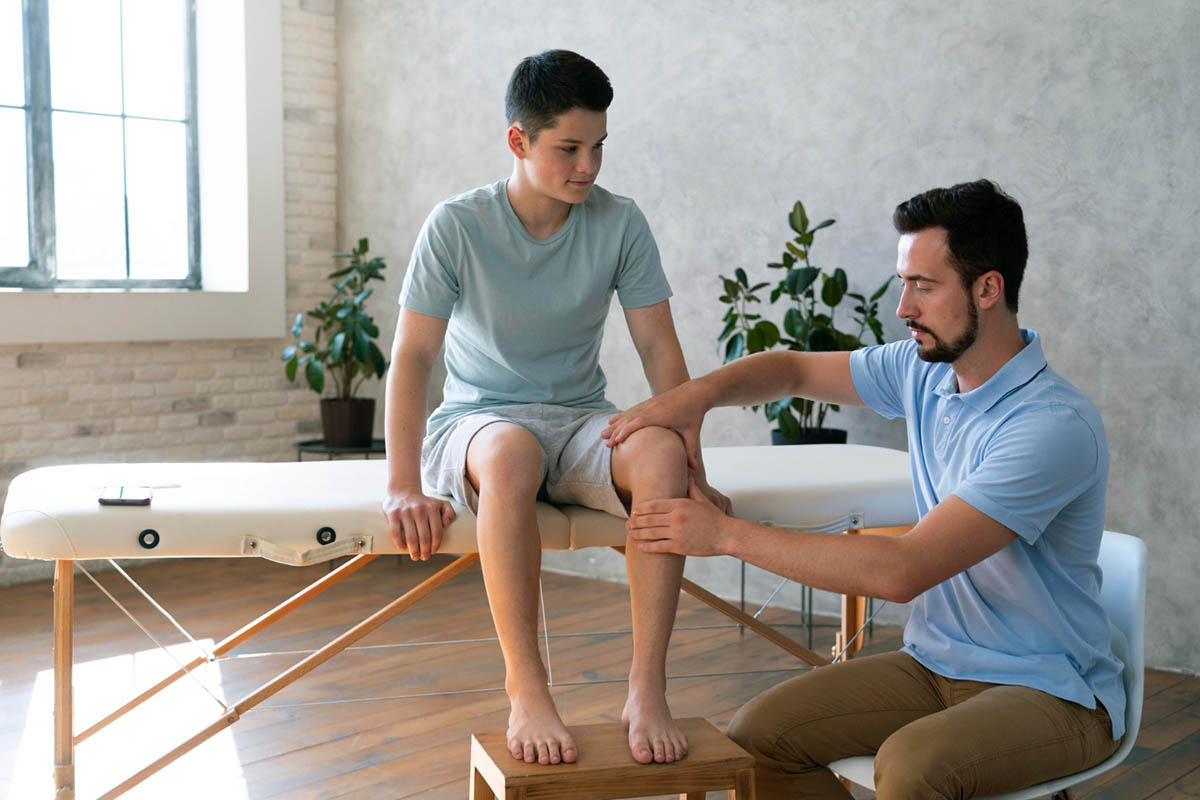Introduction
Knee pain can sometimes feel like a confusing labyrinth. Anterior (front of the knee) knee pain can have a myriad of causes, from patellofemoral pain syndrome to meniscal tears and beyond. Specific & targeted treatment approaches can alleviate discomfort and restore knee health, regardless of the underlying diagnosis. There are many online influencers who promise results with simplified & templated treatments, but it would be easy to miss several factors in a templated program.
Deciphering the Causes of Anterior Knee Pain
1. Patellofemoral Pain Syndrome (PFPS): PFPS, also known as runner’s knee, is characterized by pain behind or around the patella (kneecap), especially during activities that involve bending the knee. Treatment often includes relative rest, mild stretching and targeted strengthening exercises for the quadriceps and hip muscles. Occasionally orthotics or shoe modifications will be helpful. Overall, addressing biomechanical factors contributing to knee malalignment or excessive stress is key.
2. Patellar Tendonopathy: Patellar tendonopathy, or jumper’s knee, involves pain and inflammation in the patellar tendon, commonly affecting athletes who engage in repetitive jumping or running activities. Treatment may include relative rest, tendon loading within tolerated ranges, and gradual return to activity.
3. Quadriceps Tendonopathy: Quadriceps tendonopathy occurs when the quadriceps tendon becomes inflamed or irritated, leading to pain and discomfort above the patella. Treatment typically involves eccentric strengthening exercises for the quadriceps, and addressing contributing factors such as tightness or weakness in surrounding muscles.
4. Meniscal Tear: A meniscal tear is a common knee injury that can cause anterior knee pain, especially with twisting or pivoting movements. Patients may experience popping or clicking deep in the knee along with a sense of pressure. Treatment options vary depending on the severity and location of the tear but may include rest, physical therapy to improve knee stability and range of motion, and in some cases, surgical repair or removal of the damaged meniscus.
5. Fat Pad Irritation: Fat pad irritation occurs when the infrapatellar fat pad, located beneath the patella, becomes inflamed or irritated, causing anterior knee pain. Treatment may include rest, ice, avoiding knee hyperextension, and physical therapy to improve knee biomechanics and reduce stress on the fat pad – especially hamstring and quad stability & strength.
6. Stress Fracture: A stress fracture in the knee, typically involving the patella or surrounding bones, can cause anterior knee pain, especially with weight-bearing activities. Treatment may include rest, immobilization with a brace or cast, and gradual return to activity with appropriate modifications.
7. Osteochondral Lesions: Osteochondral lesions, or cartilage injuries, can cause anterior knee pain, especially with movement or weight-bearing activities. Treatment options vary depending on the size and severity of the lesion but may include rest, physical therapy to improve joint stability and function, and in some cases, surgical intervention to repair or remove the damaged cartilage.
8. Referred Pain: Anterior knee pain can also be referred from other structures in the knee or surrounding areas, such as the hip or lower back. Treatment involves identifying and addressing the underlying source of the referred pain through appropriate interventions, such as physical therapy or addressing postural imbalances.
Tailored Treatment Approaches
While the causes of anterior knee pain may vary, the overarching goal of treatment is to alleviate discomfort, improve function, and address underlying biomechanical issues. The specific approach will depend on the underlying diagnosis, severity of symptoms, and individual patient factors.
Conclusion
By working closely with healthcare professionals and following a comprehensive treatment plan, individuals can find relief from anterior knee pain and get back to enjoying the activities they love with confidence and comfort.


